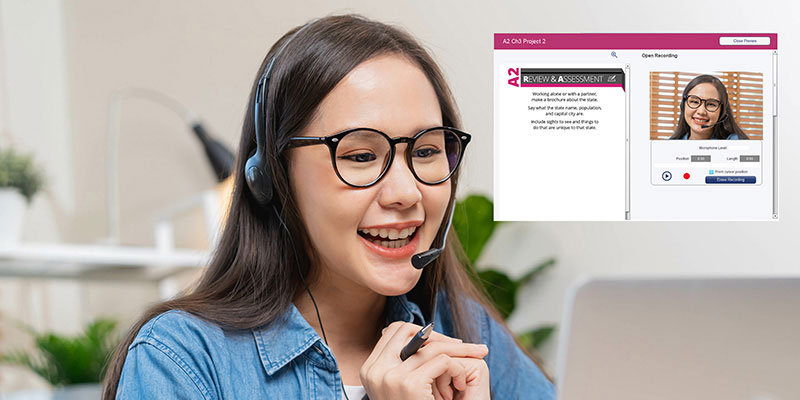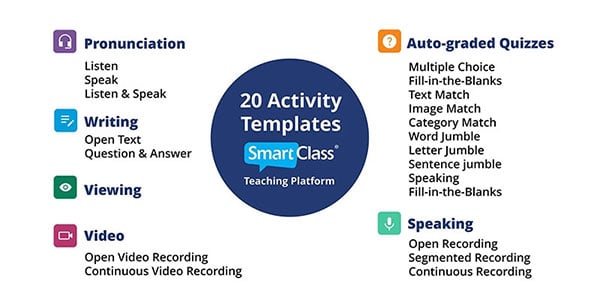School social distancing: How we can still teach effectively
Due to the outbreak of the new Coronavirus, COVID-19, teachers all over the world are now facing new challenges and have to wear yet another hat: abrupt school closures, teaching without students, setting up online learning (where ever possible), and staying calm in a confusing, scary, and demanding time. So how can we still teach effectively during school social distancing measures?
Some schools gave teachers some heads-up about the upcoming closures, other teachers heard on Friday night that students aren’t going to come back on Monday. Some teachers are required to set up online classes or come back into school to prepare packages to be mailed out to students and parents, while other teachers are sitting at home not knowing what will come next. And no one really knows how long this will be the new “normal”.
Fear is a normal human response when we are facing emotional and physical uncertainties. The past few days have left all of us with much fear. But fear doesn’t have to engulf us. Fear can also be a time to make a positive change. Fear doesn’t have to be paralyzing or hold us back from taking action. That’s why FDR said, “The only thing to fear is fear itself”.
So instead of focusing on the unknown, I want to spread some positivity and offer some help for all the fantastic language teachers out there. Let’s work together, share ideas, and exchange materials that we find helpful to continue the language learning for our students and fill their days with joy and purpose.
Here are some basic rules to consider before/while you are planning your distance language learning.
- Work with what you have, and especially, what your students have access to
- Be creative
- Teach the parents to be teachers
- Don’t expect too much from your students
- Send less than you would assign in your class
- Include the current situation in your assignments
- Make yourself available for parents and students
- Exchange ideas with colleagues or adapt something from a free resource
Let’s look at some possible situations and conditions of your school and parent/student community and try to give some ideas of how you can handle the situation.

Best case scenario:
If you already have some kind of LMS or online website that you use in your regular language classes, and your students have access to the internet and computers at home, you are lucky. You can continue working from home and meeting with your students in an online classroom. Conference calls, one-on-one video sessions, and pairing students up to work together on projects and assignments is possible with the many free communication tools out there. If your school doesn’t restrict you in the utilization of messaging apps and exchanging phone numbers, you set up groups to make communication and answering general questions even easier. Many publishers, websites, networks, and content developers have made their materials for students free in this challenging time. While not everything might be useful for your curriculum, it doesn’t hurt to look at what others have created and implement this in your distance learning curriculum. Otherwise, you are the expert, so you know what you would be teaching right now and in a couple of weeks from now, so rely on what you have created already and make it available for students.
Medium case scenario:
You might use some sort of online learning or have a website your students use from time to time, but your students don’t all have internet or a computer at home to access it. You might also mainly have contact information from parents, and not an email address or phone number from your student himself. Also possible: Your students are too little to work independently on worksheets or anything online and need a lot of guidance or someone to print out worksheets for them.
In this case, you have to be a little bit more creative and it will take more time to get materials and assignments to your students. Start by communicating with all of the parents regularly. Keep them informed about what you are planning and when you will have more information for them. Parents are probably more scared than you are right now. They are not teachers. They have barely had to explain things to their kids, and they mostly still have to work themselves. Keep that in mind whenever you are communicating. Try to explain assignments to them as you would to your students (or even in more detail, because your students know your routines, the parents do not!) If possible, invite parents to attend an online “introductory” session where you outline the schedule you set up, explain the materials they need, and give them a chance to ask questions. You might also want to consider giving parents and students a time window in which you are available by phone, email, or video call to help with immediate questions and problems they might encounter.

Worst case scenario:
You didn’t have time to prepare yourself for the school closure, all your materials are in school, you and your students don’t have an account for any online learning tool, and your students or parents don’t have computers or consistent internet access. Okay, breathe! It’s all going to be fine. Now is the time to be creative. If you are allowed back into your school building, now is the time to act. Get as much information about your students and parents as possible. Email addresses, mailing addresses, anything. Try to take home the most important materials you think you’d need to teach remotely for the next couple of months (hopefully you won’t have to, but we all don’t know what is going to happen for sure). If you think you can reach parents via email, it will be a little bit easier for you to set up communication. But if you doubt most parents will have access to printers or computers at home, you have to find a way around it. I am sure there are many great ideas out there, and I am hoping we call collect and share them here, so I just want to throw out one idea. Put together a learning package for your students. Grab an envelope, a folder, or whatever you have at hand and put your material in there. Make one individualized package for each student with their workbooks, a book to read, some paper, any worksheets you want them to complete, and any projects you came up with. Also, add detailed instructions (for students and parents) as well as a proposed schedule, timeline, deadlines, and so forth. I think it will be especially important to assign students something that they are familiar with. So a workbook they have been using for months, or the same layout of a project, etc will all help them to feel safe and secure in this situation. For students, this is a very confusing time. The youngest doesn’t quite understand what is going on, and the oldest probably knows too much about what is going on. They will all be faced differently by this uncertainty and a familiar worksheet or book might at least make something feel normal and known.

Send these packages to your students, communicate a pickup spot, or drive them to your students' home and leave them on the porch. Be there for them, like you would when they came to your classroom every day.
Whichever scenario or combination thereof might apply to you, don’t literally isolate yourself. While social distancing is necessary, we are lucky we live in a world where we are very connected through social media, the internet, and our phones. Work together with your colleagues, start a daily online brainstorming session, and explore what is out there already. When you set up your curriculum, keep your students in mind. Think about what they are dealing with right now at home, and don’t have the same expectations that you would have in your classroom. Assign less than you would normally and give students a chance to do a lot of independent work.
Learn more about some ideas for FOREIGN LANGUAGE TEACHING during the COVID-19 Pandemic and I’ll be sharing some simple ideas of how you can keep language learning going and motivate your students to still do something while they are at home.


